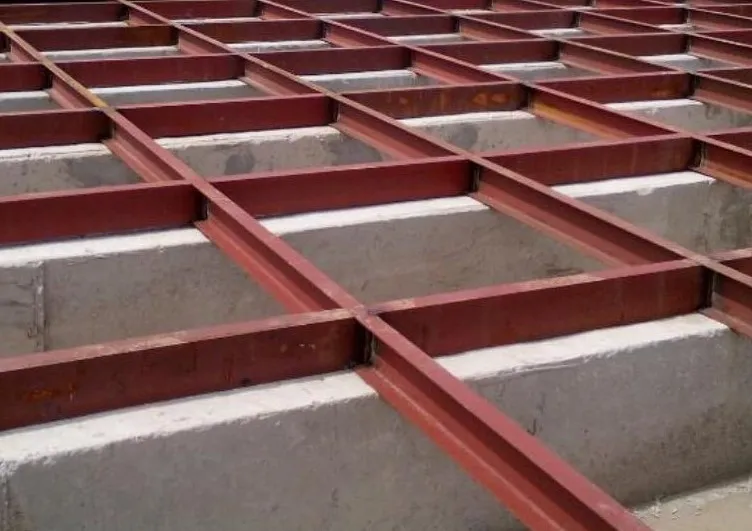loading...
- No. 9, Xingyuan South Street, Dongwaihuan Road, Zaoqiang County, Hengshui, Hebei, China
- admin@zjcomposites.com
- +86 15097380338
- Welcome to visit our website!
frp angle bar
Understanding FRP Angle Bars Strengthening Structures with Innovation
Fiber Reinforced Polymer (FRP) angle bars are an innovative and versatile solution for various structural applications in construction and engineering. These composite materials, composed of a polymer matrix reinforced with fibers such as glass, carbon, or aramid, offer a unique combination of properties that make them increasingly popular in modern building practices. This article delves into the attributes, advantages, applications, and future perspectives of FRP angle bars.
Definition and Composition
FRP angle bars are profile sections shaped like a right angle, typically used where a structural support is required. The distinctive feature of FRP materials is their lightweight nature combined with significant strength, corrosion resistance, and ease of installation. Depending on the fiber type, different characteristics can be achieved. For instance, glass-fiber-reinforced polymers (GFRP) are commonly used for their balanced performance and cost-effectiveness, while carbon-fiber-reinforced polymers (CFRP) offer superior strength-to-weight ratios but at a higher price.
Advantages of FRP Angle Bars
One of the primary advantages of FRP angle bars is their remarkable resistance to environmental degradation. Unlike traditional materials such as steel, which can succumb to corrosion in harsh conditions, FRP remains stable and durable over time. This characteristic makes FRP angle bars an excellent choice for coastal structures, chemical plants, and other environments prone to corrosive elements.
Additionally, the lightweight nature of FRP allows for easier handling and installation, reducing labor costs and overall project timelines. This advantage becomes particularly significant in projects where weight limitations are critical, such as in bridge construction or when retrofitting existing structures. Furthermore, the excellent tensile strength of FRP enhances the structural integrity, ensuring that buildings and installations can withstand significant loads and stresses.
frp angle bar

Applications of FRP Angle Bars
FRP angle bars find a wide array of applications across different industries. In civil engineering, they are commonly used in the construction of bridges, walkways, and guardrails, where their strength and lightweight properties contribute to safer and more efficient designs. In the marine industry, they are utilized in docks and piers, protecting vital structures from the damaging effects of seawater.
Moreover, FRP angle bars are gaining traction in the renewable energy sector, particularly in the construction of wind turbine towers and solar panel supports. Their resistance to corrosion and lightweight properties make them ideal for applications where longevity and minimal maintenance are desired.
Future Perspectives
As the demand for sustainable building materials grows, the use of FRP angle bars is likely to expand. Technological advancements in manufacturing and material science will improve their performance, enhance recyclability, and reduce production costs. Moreover, increased awareness of the environmental benefits of reduced maintenance and longer lifespans will drive further interest in FRP solutions.
In conclusion, FRP angle bars represent a significant advancement in construction materials, marrying strength, durability, and innovation. As industries continue to seek sustainable alternatives, FRP technology will play an integral role in the future of architecture and engineering, promising safer, more efficient, and environmentally friendly structures across the globe. Whether in urban developments, infrastructure projects, or renewable energy initiatives, the potential for FRP angle bars is vast and promising, defining the future of structural integrity in various applications.
-
The Rise of FRP Profiles: Strong, Lightweight, and Built to LastNewsJul.14,2025
-
SMC Panel Tanks: A Modern Water Storage Solution for All EnvironmentsNewsJul.14,2025
-
GRP Grating: A Modern Solution for Safe and Durable Access SystemsNewsJul.14,2025
-
Galvanized Steel Water Tanks: Durable, Reliable, and Ready for UseNewsJul.14,2025
-
FRP Mini Mesh Grating: The Safer, Smarter Flooring SolutionNewsJul.14,2025
-
Exploring FRP Vessels: Durable Solutions for Modern Fluid HandlingNewsJul.14,2025
-
GRP Structures: The Future of Lightweight, High-Performance EngineeringNewsJun.20,2025
